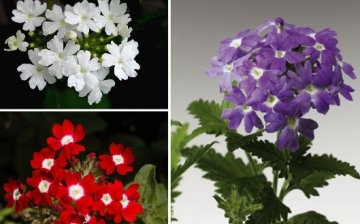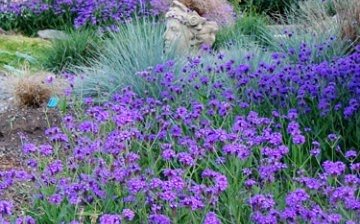Verbena, a magical and beautiful plant
Verbena is a magical plant, as many say and use it in amulets and love spells. Moreover, there is medicinal verbena, which helps with many diseases.
And there is verbena, which is grown in our gardens or as a pot plant using ampelous hybrid varieties of verbena.
On the other hand, verbena is a herbaceous plant, depending on the climate, it can reach from thirty centimeters to a meter. It blooms with beautiful flowers, collected in inflorescences, which can be of different colors, and the stem can be erect, spreading and drooping. We often use it as an annual, although in warm climates it grows well as a perennial plant.
It is better to grow verbena through seedlings, the seeds of which should be sown around the end of March. Just sprinkle seeds on the ground without sprinkling them with sweat, and the container with soil and seeds should be placed in a very warm (like the tropics) place (for example: near a battery) and put glass or transparent film on it. After the seeds hatch and germinate, and this happens quickly, the container should be placed in a room with a lower temperature, where the sprouts will get stronger and take root. The soil should not be excessively wet, but it should not be overdried either. With two true leaves, the seedlings dive, and with five leaves of ampelous verbena, pinching is carried out, other varieties are not pinched. When two weeks have passed after the pick, all verbena seedlings need to be fed.
It is necessary to plant seedlings in the ground when the frosts will no longer return, like any other seedlings, to a prepared and soaked hole.
An excess of moisture and nitrogen leads to the fact that numerous shoots appear on the plant, but inflorescences on the bushes cease to form. Verbena is drought tolerant, but don't forget to water it when it's dry days. Full complex fertilizers need to be applied up to four times per season.






